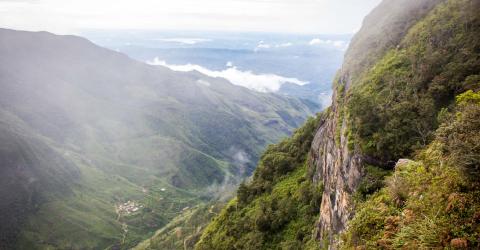Horton Plains National Park
Horton Plains National Park is a key component of Sri Lanka’s most important catchment area. It is a highly unique eco system that homes a large number of endemic plants and fauna that represent the country’s wet and montane zones. Mount Totupolaanda and Mount Kirigalpotta can be seen in the north and west regions of the park while the big world’s end is one of the park’s main attractions. The Baker’s fall with its misty waters is another awe inspiring location within the park. The plateau at 2,100 m of Horton Plains makes for the highest tableland in the country. The climate within the park is mostly rainy with an annual rainfall that exceeds 5000 mm even though a short dry spell is sometimes experienced between January and March. The average temperature in the park is usually around 15ºC.
A grassland fringed with patches of dense montane cloud forests is a characteristic feature of Horton Plains that supports high levels of endemism with 5% of the floral species f being endemics of Sri Lanka. The Sambar Deer is the most commonly seen faunal species in the park even though Slender Loris, Long Clawed Shrew, Montane Toque Macaque are among other common species. The park s also home to 12 species of endemic birds with certain species such as the Sri Lankan Blue Magpie only recorded in Horton Plains.

